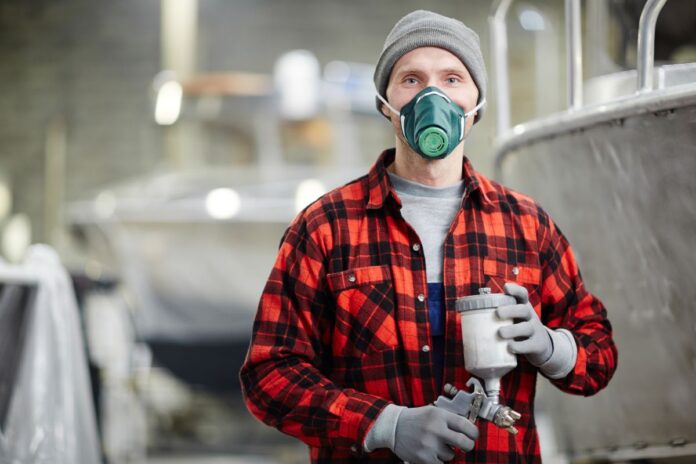Can You Paint Asbestos Safely?
Around Australia, asbestos remains a common building material found in older properties. In Queensland especially, many mid-century homes were built using asbestos.
So, what does this mean for painting?
Asbestos is risky. Any damage to asbestos materials can result in the release of tiny fibres capable of damaging lung tissue and triggering asbestosis, mesothelioma, or lung cancer in the long term. That’s why it’s so important to do your due diligence.
The good news is that it is possible to safely paint asbestos. Here’s what you should know.
How to Paint Safely Over Asbestos Surfaces
When it comes to asbestos, the safest option is nearly always to have it professionally removed. However, when this isn’t possible, proper precautions are necessary to reduce risks associated with painting.
Before painting, it’s important to carefully assess asbestos materials, checking for signs of damage. Next, you’ll need to ensure that the material is sealed. This means applying an approved sealant that actively prevents paint from penetrating the material and releasing fibres into the air. Always allow sealants to dry and cure completely.
Before painting, wipe surfaces with a damp cloth, and always avoid sanding. The key is to avoid causing any damage to the asbestos surface, as this reduces the risk of ambient fibres. Generally, it’s best to use paintbrushes and rollers when painting asbestos surfaces. This way, you can easily control pressure and apply paint with a light touch to limit the risk of abrasion.
It’s also best to rely on asbestos-specific paints. These paints are designed to minimise risks associated with painting asbestos surfaces, and they can help with sealing. Remember, whoever is painting your asbestos wall should wear adequate personal protective equipment and work carefully.
What Not to Do While Painting
Asbestos can be dangerous. In order to paint safely, you need to know what not to do.
With asbestos surfaces, it’s essential that you take every step to reduce the risk of damage or disruption that might cause fibres to release and be inhaled. If you’re wiping down asbestos walls, you’ll need to avoid re-soaking rags or sponges to eliminate the risk of contaminating water. When working with asbestos, you should always avoid sanding, and you should never use high-pressure cleaning or painting devices.
Additionally, it’s worth noting that asbestos surfaces are frequently linked to lead paint, with both materials favoured during a similar era. Lead paint can be a serious health hazard, especially for children and pregnant women, so you’ll need to proceed with care.
Repainting over lead paint can pose a re-exposure risk. If the paint is chalking or flaking, you may need to employ a professional to remove or replace it. If the paint is in good condition and there is no high-risk person occupying your home, you may be able to carefully apply a proper sealant and overcoat.
When In Doubt…
When in doubt, leave it to the professionals! It’s always best to consult an experienced house painter, who can ensure the safest approach.
By working with a professional, you can limit your risk of asbestos exposure and know that your property will be taken care of. This can help you look after your family’s health and reduce the risk of problems arising later on.
Painters who are experienced in asbestos and lead paint management can ensure your property aligns with safety standards and that you’re using the right methods and paints to protect against both damage and health hazards.
With asbestos, there are no second chances, so don’t take the risk. Contact a professional painter you can trust to get the job done the right way.





